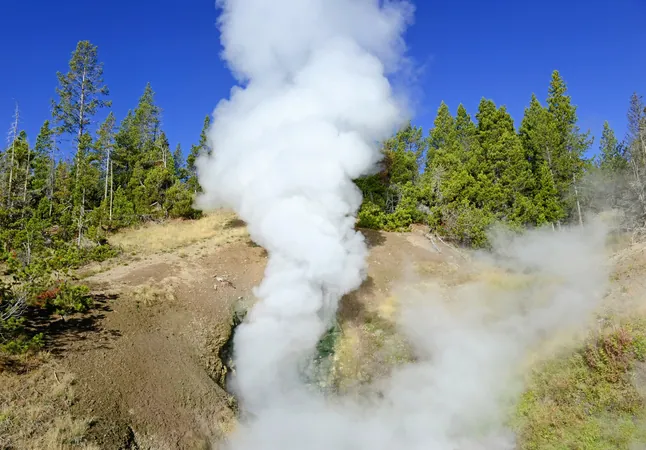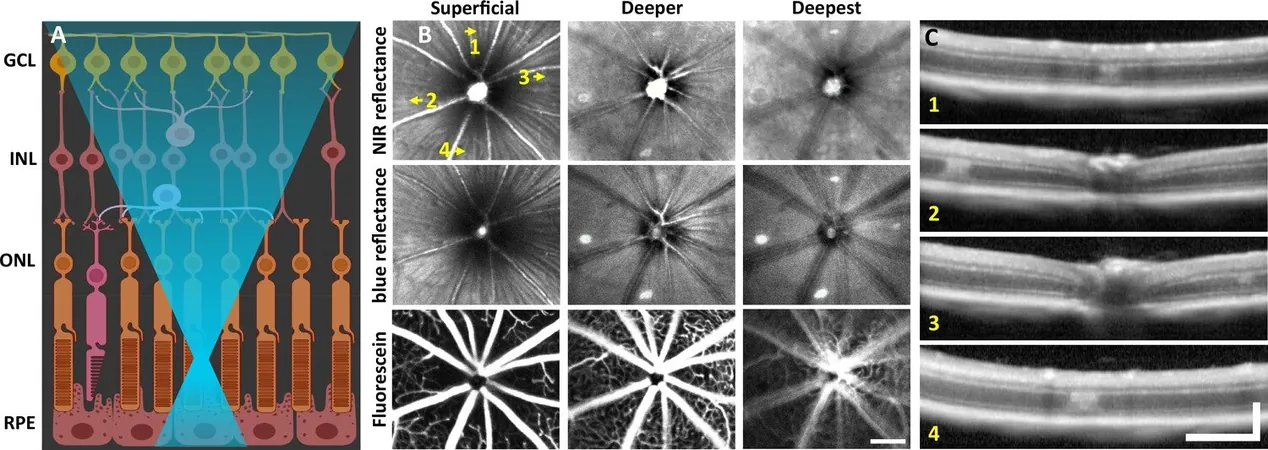
Unlocking Earth's Ancient Secrets: Phosphorus as the Catalyst for Life
2025-07-06
Author: Ming
The Age-Old Mystery of Life's Origins
How did life first emerge on Earth? This question has puzzled humanity for centuries, with clues scattered across ancient landscapes and deep within the oceans. A crucial piece of this puzzle lies in phosphorus, an essential element for all known life.
Phosphorus: The Vital Ingredient
Phosphorus is integral to life; it forms the backbone of DNA and RNA and constructs cell membranes. Yet, this essential element predominantly hides in rocks, trapped within phosphate minerals that resist dissolving in water. This begs the question: how did early Earth accumulate enough phosphorus to kickstart life?
A Deep Dive into Ancient Rocks
To tackle this question, researchers Yuya Tsukamoto and Takeshi Kakegawa from Tohoku University ventured into uncharted territory—deep-sea volcanic rocks, some of which date back 3.455 billion years in the Pilbara Craton of Western Australia. Their discoveries were eye-opening.
"We found that phosphorus was significantly leached from hydrothermally altered basaltic rocks compared to less altered ones," explains Tsukamoto.
Hydrothermal Wonders Beneath the Waves
Hot fluids permeating these ancient rocks carried phosphorus into the seawater, creating localized phosphorus-rich environments in the ocean. The study reveals that these hydrothermal processes released staggering amounts of dissolved phosphate—up to 2 millimolar, nearly 1,000 times the levels seen in today's oceans.
The Seas of Life
This revelation shifts our understanding of early Earth; it was not a barren landscape but a vibrant, nutrient-rich habitat. The phosphorous influx from underwater hydrothermal systems could equal or even surpass the current phosphorus input from rivers and terrestrial weathering.
According to Tsukamoto, "This study provides direct evidence that submarine hydrothermal activity significantly enriched the early oceans with phosphorus, suggesting that life had the necessary building blocks to thrive."
From Oceans to Hot Springs: Life's Hidden Cradles
But the story doesn't end with ocean vents. The research also highlights the role of hot springs on land as potential sources of phosphorus. These terrestrial hydrothermal systems may have similarly contributed to the nutrient cycles necessary for life's formation.
Charting New Territory in the Quest for Origins
This groundbreaking study opens avenues for further research. Scientists are eager to trace the behavior of phosphate throughout Earth's history, piecing together the narrative of life's development. The findings suggest that Earth's first life forms may have thrived in unexplored ecosystems beneath the waves and in steaming terrestrial springs.
Conclusion: A New Perspective on Earth's Life Origins
What this study underscores is profound: the elements crucial for life's inception may have originated from environments we have only begun to investigate. Life’s narrative might have begun quietly, deep within the Earth, waiting to be uncovered.
Published in Geochimica et Cosmochimica Acta, this study reshapes our understanding of how life’s building blocks could have formed on our planet.


 Brasil (PT)
Brasil (PT)
 Canada (EN)
Canada (EN)
 Chile (ES)
Chile (ES)
 Česko (CS)
Česko (CS)
 대한민국 (KO)
대한민국 (KO)
 España (ES)
España (ES)
 France (FR)
France (FR)
 Hong Kong (EN)
Hong Kong (EN)
 Italia (IT)
Italia (IT)
 日本 (JA)
日本 (JA)
 Magyarország (HU)
Magyarország (HU)
 Norge (NO)
Norge (NO)
 Polska (PL)
Polska (PL)
 Schweiz (DE)
Schweiz (DE)
 Singapore (EN)
Singapore (EN)
 Sverige (SV)
Sverige (SV)
 Suomi (FI)
Suomi (FI)
 Türkiye (TR)
Türkiye (TR)
 الإمارات العربية المتحدة (AR)
الإمارات العربية المتحدة (AR)